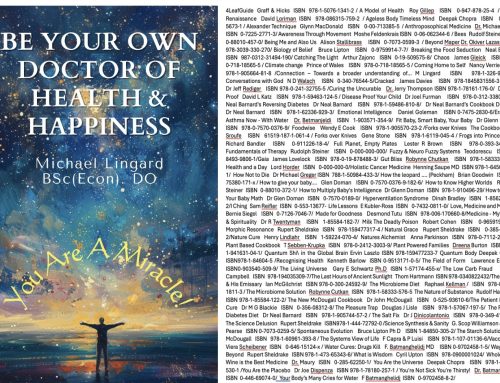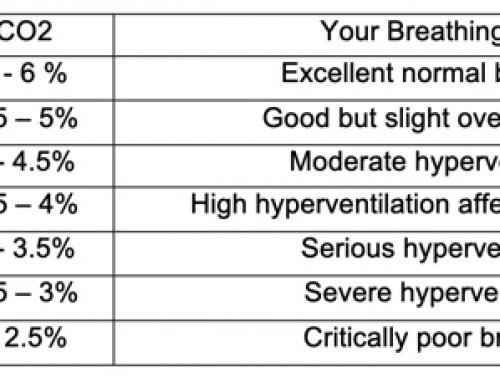Click on the image above to learn of an alternative;
your free e-book entitled “The Food Connection”
Story at-a-glance
-
The new Planetary Health Diet is designed to be applied to the global population and entails cutting meat and dairy intake by up to 90%
-
Along with fake meat products, fake dairy foods are on the horizon, including imitation ice cream made with lab-produced milk proteins
-
A company called Perfect Day is using genetically engineered (GE) Trichoderma reesei fungus to produce animal-free versions of the dairy proteins casein and whey
-
The healthiest dairy products come from grass-fed cows that are integrated into their surrounding environment, but Perfect Day’s fake milk proteins can only be produced in a system that’s “isolated from the outside world”
-
Grass-fed, regenerative farming is the true environmental and sustainability winner, but it’s being overshadowed by the New Normal, intent on forcing you to eat fake food.
Swapping traditional, whole foods grown by small farmers for mass-produced fake foods grown in a laboratory is part and parcel of the Great Reset. The EAT Forum, co-founded by the Wellcome Trust, developed a Planetary Health Diet that’s designed to be applied to the global population and entails cutting meat and dairy intake by up to 90%, replacing it largely with foods made in laboratories, along with cereals and oil.1
Sadly, this is not what your body needs to thrive, but it’s being pushed as a healthy, green, and sustainable alternative to animal foods. The fake meat industry is already well-established. Consulting firm Kearney forecast that animal protein will peak in 2025, while plant-based meat will continue to grow, reaching $450 billion by 2040, at which point it would represent up to 25% of the meat market — a $1.8 trillion industry.2
Many tech big-wigs are invested in fake meat products, which they plan to peddle to feed the masses. However, the fake food market is expanding, and it’s not only plant-based meat that’s being pushed as the future of food but also animal-free dairy, including ice cream.
‘Real Milk Proteins’ Made From GE Fungi
Perfect Day, a company that’s using genetically engineered (GE) Trichoderma reesei fungus to produce synthetic versions of the dairy proteins casein and whey,3 was founded in 2014 by two vegan bioengineers looking for a better-tasting, animal-free milk.4 The company states it’s producing “real milk proteins — identical to what cows produce,”5 but even though it may be molecularly identical, it’s far from the same.
Popular Science named Perfect Day’s animal-free whey protein as one of the 100 greatest innovations of 2020, stating:6
“[T]he next generation of lab-grown animal products isn’t meat — it’s dairy. To achieve their synthesized milk, Perfect Day inserted a bit of cow DNA into Trichoderma reesei fungus. When fed sugar, the engineered microbes churn out the dairy proteins, casein and whey.
Combine those with water, plant-based fats, vitamins, and minerals, and you get dairy products — without having a cow. Smitten Ice Cream and Brave Robot have turned the proteins into delicious vegan, dairy-based ice cream, but Perfect Day is hoping to expand into a whole range of creamy products.”
Fake Food Made in a Setting ‘Isolated From the Outside World’
The process to make lab-grown, animal-free milk proteins is far from natural, but Perfect Day is trying to get around that, describing their process as involving “nature’s code,” which is another way of describing the DNA that they are manipulating:7
“All proteins in nature are encoded by specific sequences of DNA called genes. Amazingly, every living creature on Earth can understand the same genetic code. So to create an animal-free version of milk proteins, we simply had to introduce these animal genes to an organism other than a cow.
The actual cow genes are possible to obtain non-invasively, from hairs or even a cheek swab. For us, it was even easier; these genes are already catalogued in free scientific databases.”
They use GE fungi microflora, which they go so far as to say “grazes” on plant-based inputs, hoping your mind’s eye will revert to a cow grazing in a field, rather than the “large tanks” in which their GE fungi are actually grown. It’s quite telling that, while the healthiest dairy products come from grass fed cows that are integrated into their surrounding environment, Perfect Day’s fake milk proteins can only be produced in a system that’s “isolated from the outside world”:8
“By following a strict cleaning regimen for our tanks and ensuring they’re a closed system isolated from the outside world, we can ensure we’re making the purest, safest milk proteins in the world.”
The U.S. Food and Drug Administration has already given the GE proteins GRAS (generally recognized as safe) status, as it also did with Impossible Foods’ soy leghemoglobin, even though it’s unknown what the long-term consequences of consuming this novel fake food will be.
World’s Most Sustainable Ice Cream?
Brave Robot is one of the ice cream brands using Perfect Day’s GE non-animal whey, which is billing its product as “the world’s best tasting and most sustainable dairy ice cream.”9 While pointing out the obvious — that conventional and factory-farmed dairy production is not good for animals or the planet — they suggest that the only alternative is to create a synthetic food produced in a laboratory.
Brave Robot, by the way, is essentially the same company as Perfect Day. Three months after the FDA gave the GE whey protein GRAS status in April 2020, Perfect Day co-founded The Urgent Company, which created Brave Robot as its first brand.10
Perfect Day is marketing itself as environmentally friendly, citing a greenhouse gas life cycle analysis that found Perfect Day’s GE whey protein is 85% to 97% lower in emissions than comparative bovine dairy proteins.11 According to the findings:12
“If US consumers switched entirely to Perfect Day whey protein, this would save up to 246 million tons of CO2e emissions, which is the equivalent of up to 28 million homes’ energy use for one year (all the homes in New York and California combined) or up to 53 million passenger vehicles driven for one year (all the cars in NY, CA, TX, and FL combined), according to the US EPA Greenhouse Gas Equivalencies Calculator.”
This is just merely a fabricated fantasy PR spin, as it’s comparing its product to conventional dairy, a notoriously polluting industry. Ben & Jerry’s similarly greenwashed its brand, and although it’s made with animal products — not fake lab-created proteins — its emphasis on sustainability and environmentally friendly practices is a farce, as their ice cream has long been made with concentrated animal feeding operation (CAFO) milk that’s destroying the environment.
Lake Carmi in Franklin, Vermont, is one of the areas hardest hit by industrial dairy. Home to more than 36,000 CAFO cows, which supplied most of the dairy for Ben & Jerry’s, the once pristine lake in Franklin is now in environmental crisis, plagued by blue-green algae, also known as cyanobacteria.13
As fertilizer and manure from industrial dairy farms runs off and enters waterways, it leads to an overabundance of nutrients, including nitrogen and phosphorus, in the water — nutrients that fertilize the growth of the algae blooms now taking over.14 The point is, virtually anything would appear to be an improvement when compared to the environmental atrocities of industrialized dairy, but it’s much harder to show a benefit if compared to the gold standard — grass-fed.
Grass-Fed Is Better Than Lab Fed
Like Perfect Day, fake meat company Impossible Foods claims that they have a better carbon footprint than live animal farms, and they’ve hired Quantis, a group of scientists and strategists who help their clients take actions based on scientific evidence, to prove their point via a life cycle analysis.
According to the executive summary published on the Impossible Foods website, their fake meat product reduced environmental impact between 87% and 96% in the categories studied, including global warming potential, land occupation and water consumption.15 As is the case with Perfect Day, however, this compares fake meat to meat from CAFOs.
White Oak Pastures in Bluffton, Georgia, which produces high-quality grass-fed products using regenerative grazing practices, commissioned the same analysis by Quantis and published a 33-page study showing comparisons of White Oaks Pastures emissions against conventional beef production.16
Resetting the Food Supply
The EAT Forum’s largest initiative is called FReSH, which aims to transform the food system as a whole. It’s working with biotech and fake meat companies to replace whole foods with lab-created alternatives.18,19
Bill Gates is among the technocrats investing in artificially processed meat companies and buying up U.S. farmland at a frenzied pace. Tech billionaire Gates, co-founder and former CEO of Microsoft, may seem a strange fit for the role of America’s top farmer.
But he’s been quietly amassing massive tracts of U.S. land under the cover of investment firm Cascade Investment LLC, and now owns a minimum of 242,000 acres of U.S. farmland20 in Washington, Illinois, Iowa, Louisiana, California, and multiple other states.
The acreage seems earmarked for GE corn and soy crops — the base foods for what will become an increasingly synthetic, ultra-processed food supply make up of imitation meats. The strong recommendation to replace beef with fake meat is also made in Gates’ book,21 a recommendation that stems from an overreaching theme of arrogance and the desire for recolonization and a global empire.
The idea is to imply or to create an environment in which survival isn’t possible without technology. “It is a denial of the richness of agroecological knowledge and practices that are resurging around the world,” according to a report by Navdanya, a nonprofit organization promoting biodiversity, organic farming, and seed saving founded by Vandana Shiva.22
Real Food Connects Us With the Land
Shiva explains that, by embracing lab-grown food, we’re breaking the sacred relationship with food and severing humans’ age-old connections to their food and the land on which it’s grown.23
Regenerative agriculture and animal husbandries are the next and higher stage of organic food and
farming — free from toxic pesticides, GMOs, chemical fertilizers, and CAFOs, and regenerative in terms of the health of the soil, the environment, the animals, and rural farmers.
As Shiva put it, “Regenerative agriculture provides answers to the soil crisis, the food crisis, the climate crisis, and the crisis of democracy.”24 Fake meat and dairy produced in a lab simply can’t compare, both in terms of the environment and human health.
As has become an overriding theme of 2020 and 2021, it’s time to look past the fake food propaganda being increasingly promoted and turn back to our real roots — those that embrace the necessity of living with the land and shun the experimental technologies that threaten to take it from us.
On a small scale, you can help by supporting your local organic and regenerative farmers by purchasing their goods at local farmers’ markets or purchasing your meat and dairy products directly from your local farm, while avoiding lab-produced fake food for the sake of your health and the planet’s.







Leave A Comment